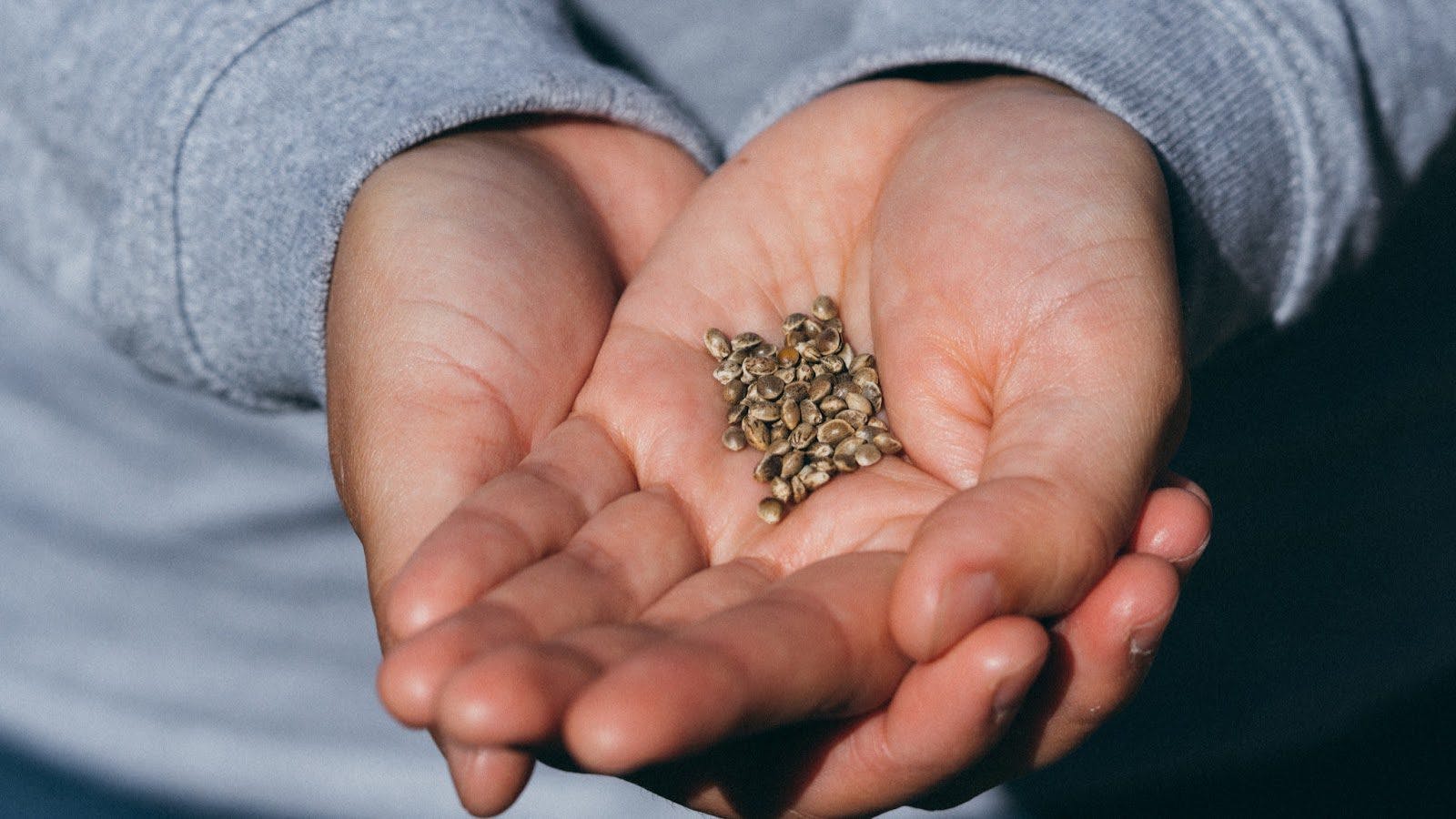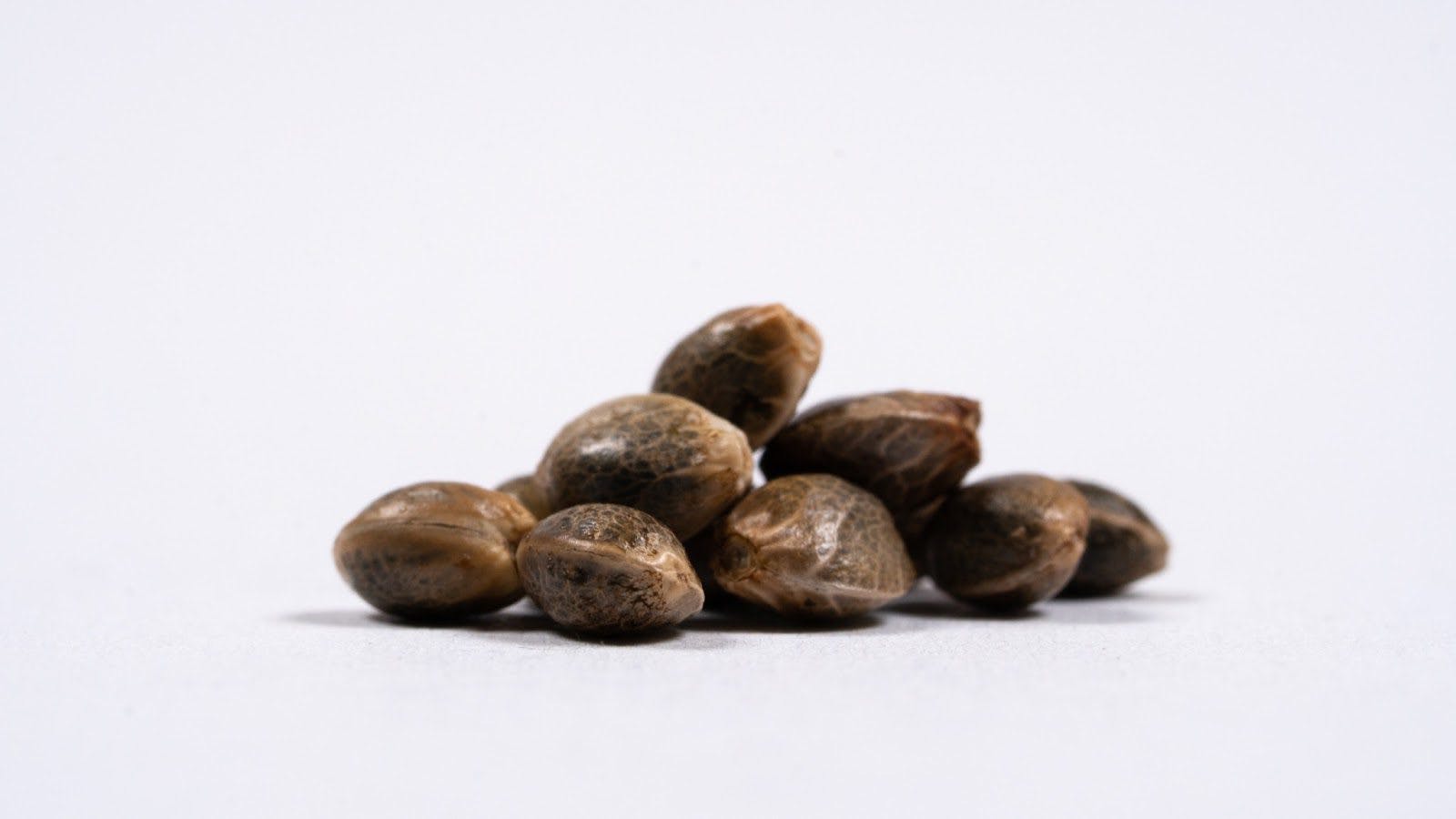Do Weed Seeds Go Bad?

Article written by

Homegrown Cannabis Co.American Seed Bank and Cultivation Experts
Content reviewed by

Dr. Lewis JasseyMedical Director - Pediatric Medicine
Do weed seeds go bad? Unfortunately, yes. Like any organic matter, seeds lose viability with age. They last a few months at room temperature, several years in cool, dark places, and up to a decade when refrigerated.
Should you bother trying to germinate a random old batch from your cupboard? How do you preserve seed freshness after you buy a new package?
Join us to learn about marijuana seed longevity. We discuss signs of aging, factors that speed up their decline, and ways to keep them viable for longer.
Get your medical marijuana card
Connect with a licensed physician online in minutes.
How Long Do Marijuana Seeds Last?
Weed seeds are living organisms that remain in a state of rest until exposed to warmth and humidity. When in proper storage, they stay capable of sprouting and growing into plants for a long time.
To understand seed longevity, you need to know about their morphology.
Autoflowering, regular, and feminized seeds consist of hard shells protecting the live genetic material on the inside. At the very center is the embryo, the genetic source for a new plant. It’s surrounded by a nutritional reserve that maintains it till germination.
The shell plays a vital role in seed preservation. Adverse environments deteriorate the protective mechanisms, endangering the embryo. When the conditions are too conducive to life, hormones activate and launch germination, whether or not you’re ready for it.
As a result, seed shelf life depends on the surroundings. If exposed to sunlight and heat fluctuations, they break down after six months. They survive for a year in an opaque material at room temperature. The figure rises to 2-3 years when the space is cold, dry, and dark.
You can further prolong seed shelf life by leaving them in an opaque jar in the fridge. If the area is under 30°F and rarely disturbed, they can last 5-10 years.
The better you shelter cannabis seeds, the longer they stay viable. Let’s see what happens when age catches up to them.
How to Tell If Your Seeds Have Gone Bad
The best way to check whether your weed seeds have gone bad is to germinate them. Even old ones may pop, and age no longer matters once they do.
There are several germination methods, but none offer better results than the paper towel sprouting technique. You place seeds between moist paper towels and keep them in a warm and dark spot for 1-5 days. They react to heat and moisture by producing thin white taproots.
If seeds pop, transport them into pots and launch the seedling stage. If not, you can still try to sow them, but the chances of success are lower.
What if you don’t want to waste time on potentially unsuccessful sprouting or aren’t ready to sow yet? Here’s how you can tell whether your marijuana seeds are still viable.
Smell Test
Seeds have a faintly woody, earthy scent when they’re healthy. If they smell moldy, they’ve probably gone bad due to excessive humidity.
The Soak Test
Put seeds in a transparent glass of water and let them sit for 15 minutes. Viable specimens are dense and sink to the bottom. Ones that float on the surface have lost their nutritional reserves or embryos.
The Touch Test
Healthy seeds feel relatively soft between your fingers. When they grow old, the shell hardens and loses its spring. In extreme cases, it might even splinter under slight pressure.
Visual Cues
Seeds aren’t very uniform in appearance: even those from the same strain come in various shapes and sizes. Still, they exhibit visual signs of age and deterioration:
- Color changes: Dark brown, black, and gray seeds are healthy and mature. White and green are too young; pale brown ones are too old. You should see a striped or spotted pattern around the shell, too.
- Sheen loss: Viable marijuana seeds have waxy coatings over their shells, glistening slightly under the light. This oily sheen suggests they can retain moisture. Those that appear dull and lifeless have lost that capability.
- Flat shape: Quality seeds are round, fat, and very likely to sprout. If they appear small and deflated, they have already lost some capability to retain moisture.
- Cracks and holes: The outer shell protects the vulnerable cannabis embryo from pathogens and adverse weather conditions. When it cracks, bacteria and other harmful lifeforms can enter the seed. The air can make the live cells dry out and die.

5 Factors That Cause Seeds to Go Bad
When weed seeds go bad, they either come too close to sprouting or get so dry that they die. Neither option is good news, but you can preserve them by keeping an eye on the following hazard factors.
1. Poor Extraction
When commercial growers acquire seeds from cannabis plants, they must immediately move them into storage. Otherwise, they deteriorate rather quickly, and you don’t get to cultivate the weed of your dreams.
Choose your seller with care and buy from trustworthy seed banks like our partner Homegrown Cannabis Co. Their impeccable storage practices guarantee your products are fresh and ready to germinate whenever you want to start growing.
2. Light
Light doesn’t aid seed storage. On the contrary, it can significantly reduce the shelf life. Besides disturbing seeds, the sun and hot bulbs can dry the nutrient reserves. As a result, the specimen is weaker and harder to sprout.
3. High Humidity
High humidity makes seeds rot from the inside. Moderate moisture can also trigger the sprouting process before you’re ready; you can’t save a taproot once it dries and dies.
4. Extreme Temperatures
Excessive heat promotes germination. If kept in scorching spaces, your seeds may pop and immediately dry out. Moderate warmth can cause trouble, too.
Temperatures of over 60°F can initiate chemical processes related to sprouting. The seed won’t pop without water, but it exhausts its nutrient storage and becomes unviable.
Excessive cold is also bad news. Freezing seeds is possible and sometimes beneficial, but only if the temperature drops rapidly. Slow cooling can kill the embryo.
5. Air Exposure
Fresh air reduces cannabis seed quality because it triggers sprouting-related processes. Vacuumed spaces maintain the hibernation period and preserve viability for later.
How to Keep Your Seeds Healthy
To start, shop with a reputable seed bank. Stellar genetics and meticulous extraction processes set you up for success. The rest is on you.
Once you buy top-quality seeds, place those you won’t immediately sow in ideal conditions. That way, you maintain a high germination rate and get healthy cannabis plants even years after your purchase.
Knowing which seeds to preserve can increase your success rate. Take a magnifying glass and inspect your batch for cracks. Those with damaged outer shells shouldn’t go into storage, as the volatile genetic material inside is already at risk. Only stash those without signs of physical harm.
These four factors make up the optimal seed storage environment:
Airtight Containers
If not immediately growing marijuana, delay opening the original package for as long as possible. Each disturbance takes days or months from seed shelf life.
Once you open the package, immediately place marijuana seeds into airtight containers. Mason jars with snap tops or thick rubber seals are perfect for long-term storage.
Opt for glass or ceramic over plastic containers. Plastic containers retain heat and might lead to ‘sweating,’ draining moisture from seeds.
Ziplock bags are another nifty solution. You remove all air from them, creating a vacuum-sealed container. Be sure to wrap them in dark plastic to protect seeds from refrigerator light.
Tip: Wash your hands before handling seeds to avoid transferring any bacteria onto them.
Minimal Light Exposure
Preventing light exposure is another important factor in storing seeds.
Block out all light by employing opaque jars or placing transparent ones in brown paper bags. Pick a snug or shaded spot, like the back of your fridge or a rarely-opened cupboard.
Stable Temperature
Temperature fluctuations can deteriorate good seeds, so stability is your primary focus. Place jars in a cupboard you rarely open or a hidden back section of your fridge. You may also get a small camping freezer for your package to minimize disturbances.
When going for short-term storage, avoid keeping seeds in a spot over 70°F. If planning to preserve them for years, 30-40°F is ideal.
You could also freeze seeds, as lower temperatures mean a slower decline. In this case, ensure they’re 100% dry by leaving them in a breezy spot for a few hours. Unfreezing is tricky if there are icy spots on shells.
Low Humidity
Moisture causes seeds to sprout, and dry air preserves them. Aim for 20-30% relative humidity to avoid germination and pest activity in the jar. Interestingly, levels under 10% somewhat lower the chances of sprouting.
Tip: If you live in a tropical area, place a small silica bag in the mason jar with seeds. These beads absorb excessive moisture and reduce humidity levels inside your container.
Get Your Medical Card
Connect with a licensed physician online in minutes.
Frequently Asked Questions
Can you save seeds that have gone bad?
You can’t de-age old seeds, but they might still germinate. Here are several ways to boost their chances:
- Pre-soak in enriched carbonated water: Add germination booster, fulvic acid, or hydrogen peroxide in a glass of lukewarm sparkling water. Let seeds soak for 12 hours.
- Scar the surface: As seeds age, their outer shells become extra thick and tough. Gently scratch them with sandpaper to let warmth and moisture infiltrate the inside.
- Remove the ridge: The elevated seed side also toughens with time. Remove it with a sharp blade to promote sprouting.
- Slice the seed open: Make a shallow cut on the shell to help it pop. Be careful not to damage the embryo.
Some seeds won’t germinate despite your best efforts. Still, these techniques might help you save at least several specimens from an old batch.
